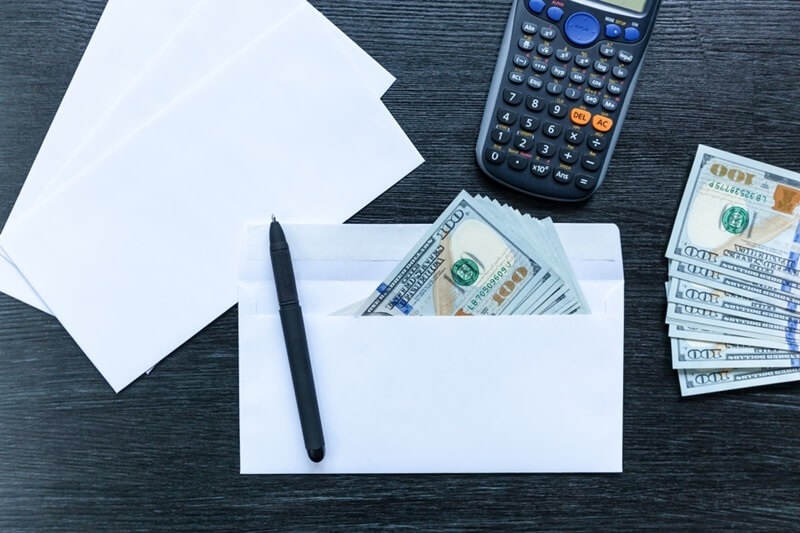
Swipe. Tap. Auto-deduct. These days, most people barely see their money before it’s gone. And yet… there’s something oddly satisfying about pulling out an envelope with crisp bills, knowing exactly how much you’ve got left for the week.
That’s the cash envelope system in action. Old-school? Maybe. But outdated? Not necessarily. In a world that thrives on digital everything, this classic budgeting method is quietly making a comeback. And not just for grandma’s grocery runs.
So, does it still hold up in 2025? Let’s talk.
At its core, the cash envelope system is all about control. You split your monthly budget into spending categories—like groceries, fuel, dining out—and assign each one its own envelope. Inside? Cold hard cash.
Once the envelope runs dry, you stop spending. No tapping into credit. No borrowing from next week. Just pure accountability.
It’s tactile. It’s visual. And for many people, it just works better than tracking numbers on a screen.

Sure, the digital world offers convenience. But it also makes money feel… invisible. And when money feels invisible, overspending becomes dangerously easy.
Cash envelopes force you to see your limits. They remind you, tangibly, what’s left and what’s not. They make you think twice before blowing $12 on an impulse snack or buying yet another “deal” on your phone.
Plus, there’s that small dopamine hit when you check your envelopes and realize—hey, I’ve still got enough for Friday night takeout.
Let’s be honest—walking around with envelopes for cash isn’t exactly 2025-friendly. Who’s paying rent or utilities in cash these days? And forget online shopping. That’s a whole other mess.
Still, there’s a way around it. The trick is blending the old and new.
Use physical cash for day-to-day expenses like food, fuel, and entertainment. For fixed digital payments like your phone bill or Netflix? Leave those in your bank account and label them mentally (or on a spreadsheet) as “virtual envelopes.”
It’s a bit of a juggling act at first. But once you find your rhythm, it works.
You don’t need a dozen categories right away. Start with the areas where you overspend most often. Dining out. Groceries. Weekend fun.
Get comfortable managing those. Once you’ve built the habit, you can expand your cash envelope categories. Think pet expenses, kids’ pocket money, or coffee runs.
Boring brown envelopes? No thanks. Spice them up! Use different colors for each category. Add stickers, doodles, washi tape—whatever gets you excited.
It sounds silly, but making your cash envelope budget visually engaging keeps you motivated. And yes, we’re all still kids at heart.
Budgeting doesn’t work if only one person’s doing it. Involve your partner. Teach your kids. Make it a family goal.
Give everyone their own envelope with cash for personal spending or shared goals. It’s not just about saving money—it’s about building financial awareness together.
Check your envelopes once a week. Not daily (that gets tiring), not monthly (too late by then).
See what’s working. See where you’re slipping. Tweak the amounts. Adjust the cash envelope categories if needed. That flexibility is what makes this method so powerful.
You know those sneaky expenses that creep up out of nowhere? Birthdays. Car insurance. School fees.
Make an envelope for them too. It’s called a sinking fund. Add a little each month, and you won’t panic when the bill arrives.
As Previously Covered: Tips to Start Saving Money Even When You Think You Can't
Some people carry around crumpled envelopes in their bags. Others use zippered binders with labeled compartments. You do you.
As long as it keeps your envelope cash sorted and easy to access, you’re golden.
Life happens. You grab a takeaway on a Tuesday, even though your “dining out” envelope is empty.
It’s okay. The point of the zero-based budget isn’t perfection—it’s awareness. So track it. Learn from it. Keep going.
Want to travel next summer? Start an envelope.
Dreaming of a new phone? Envelope.
Planning a surprise for your partner? Yep—envelope.
This isn't just budgeting. It’s motivating yourself, one envelope at a time. And when you pay for that trip or that phone fully in cash? Oh, the pride is unmatched.
Yes, there are digital tools that mimic the cash envelope system. Apps like Goodbudget or budgeting software with virtual envelopes let you “assign” dollars without physical cash.
They’re handy. Especially when going completely paper-based isn’t realistic. But for some, digital just doesn’t hit the same.
Try both. Mix and match. The goal isn’t to be perfectly analog or digital. It’s to be in control.
This is where things get interesting.
Traditional budgeting often works with loose categories: "I’ll spend around $500 on groceries this month." That’s great in theory… until you hit $620 and don’t know where it went.
With zero-based budgeting, you give every single dollar a job. Income minus expenses equals zero. That’s not overspending—it’s intentional spending.
The cash envelope method is like zero-based budgeting’s best friend. It forces clarity, category by category.
You start with what you earn. You subtract your fixed bills. Then you assign the rest to your zero-based budget: groceries, fuel, fun money, and savings. Every cent is accounted for.
If you're constantly swiping, unsure where your money’s going, and frustrated at the end of every month—then yes. Absolutely. It’s worth it.
It’s not always convenient. There will be moments you forget your cash. Or you’ll fumble with change while others tap their phones.
But the control? The peace of mind? That feeling of “I’m finally on top of things”?
Yeah, that’s priceless.
People who use the cash envelope system often report something surprising:
They spend less. Not because they’re trying harder. But because the physical nature of cash makes them pause.
Every time they break a $20, it hurts a little. And that’s kind of the point.
It turns money into a resource again—not just a number on a screen.
Don't Miss Out: Build an Emergency Fund Without Sacrificing Comfort
So, what is zero-based budgeting in a world of mobile wallets and one-click checkouts? It’s not outdated—it’s just real. Real money. Real limits. Real control.
The cash envelope system doesn’t ask you to be perfect. It just wants you to be honest. Honest about your habits. Honest about your priorities.
It’s simple. It’s old-fashioned. And it still works.
So maybe it's time to grab those envelopes and give it a try. Because sometimes, going back to basics is the smartest move you can make.
This content was created by AI